Subaru Legacy & Outback
The RHD Subaru Legacy, Legacy Wagon, and Legacy Outback models can be a great choice for rural letter carriers who need Subaru’s famed 4WD system for difficult conditions, but want a more car-like interior and experience.
Jump To Section
Subaru Legacy Introduction
The Subaru Legacy sedan, Legacy Wagon (station wagon) and Legacy Outback (more off-road ready station wagon) are renowned for their reliability, versatility, and resilience. Here we’re going to delve into the design elements, interior features, performance, safety, and maintenance aspects of the second and third generations of these vehicles. Why these two generations that span 1993 to 2003? Well, because these models are the ones that are going to be most suitable for you as a US rural letter carrier, while also being available to buy in the US. We’ll also get into the key differences between the Legacy and Legacy Outback models. So, if you’re trying to figure out which factory right-hand-drive vehicle is going to be best for you and your postal delivery route, read on and discover more about these different Subaru Legacy models.
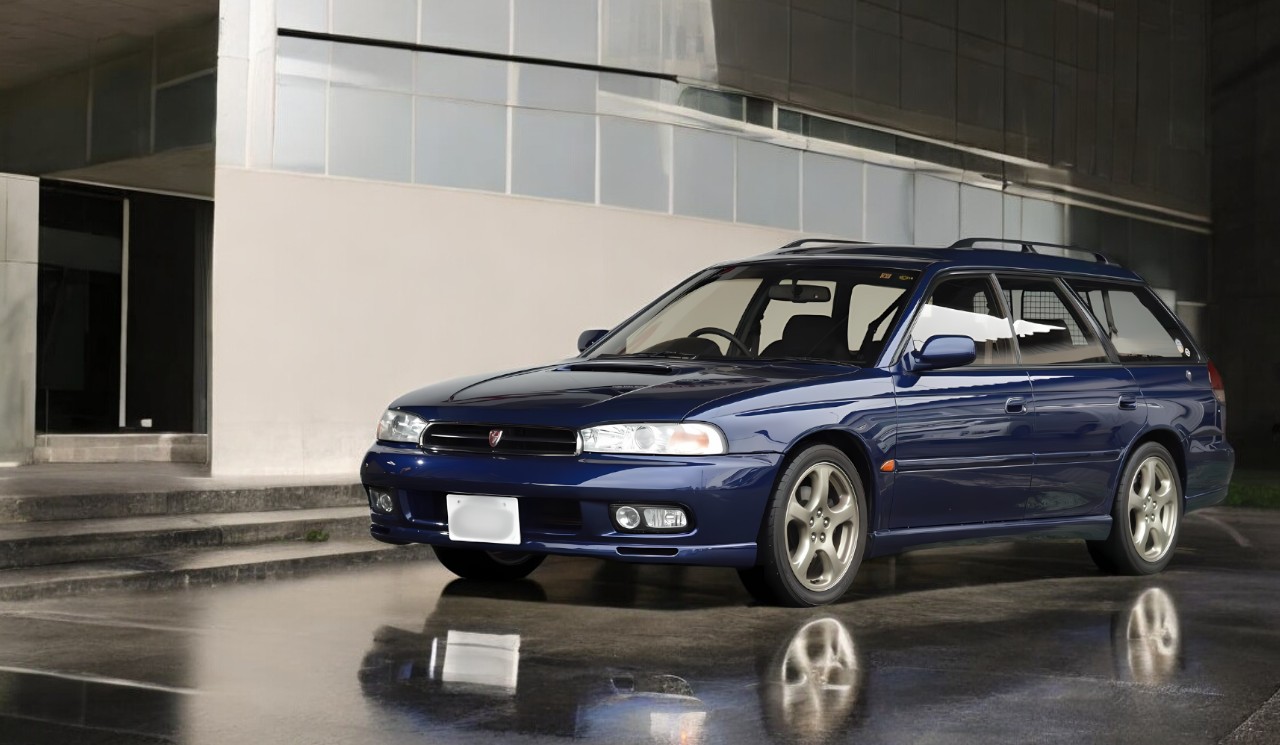
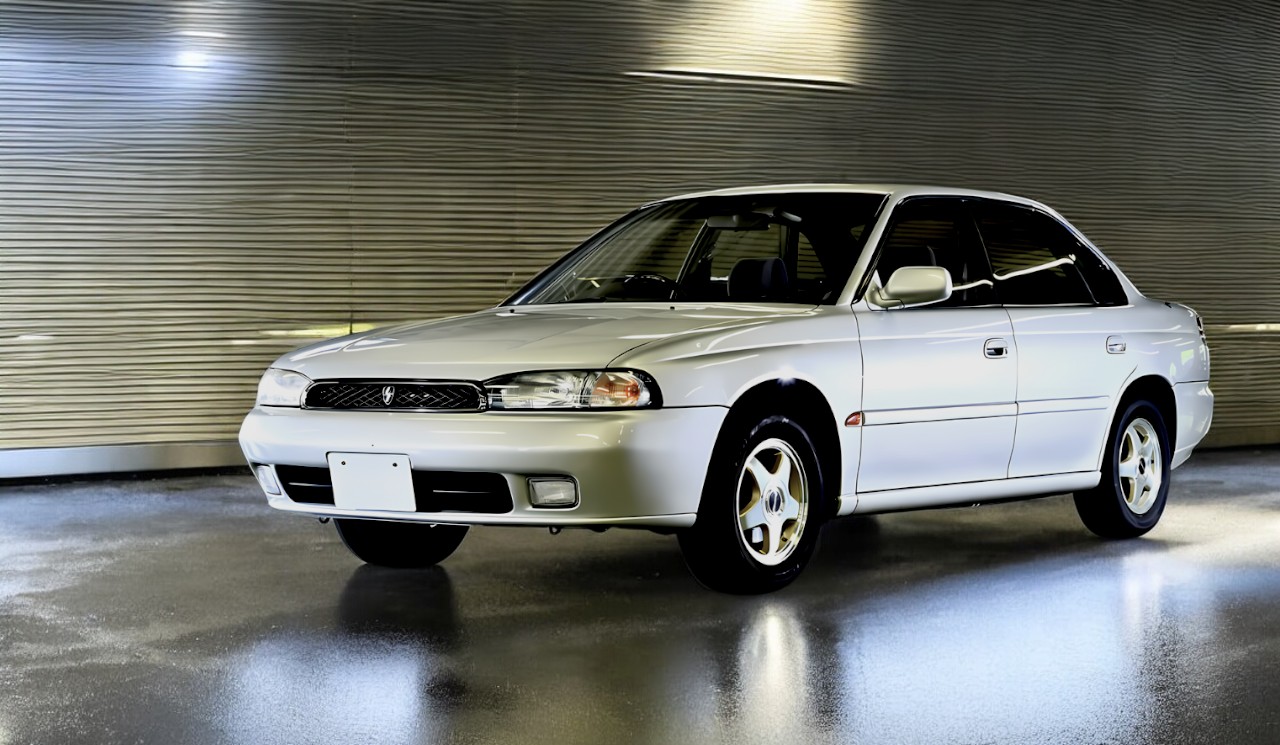
Exterior Design
Design Elements
The Subaru Legacy and Legacy Outback models have evolved significantly since their inception as slightly boring boxed vehicles in the late 80s. As we mentioned in the introduction, here we’re going to be focusing on the second and third generations, introduced in the early 1990s and late 1990s, respectively. (The two models you see above are examples of the second generation.)
The second-generation Subaru Legacy, introduced in 1993, continued Subaru’s commitment to practicality and durability. This model featured a refined, aerodynamic design with smoother lines and improved aerodynamics compared to its predecessor. The Legacy Outback, launched in 1994, added a more rugged look with increased ground clearance and protective cladding, catering to drivers who needed a versatile vehicle for various terrains.
The third-generation Subaru Legacy, introduced in 1998, brought further refinements in design and functionality. Designed by Olivier Boulay, this generation featured a sleek, modern appearance, with cleaner lines and a more sophisticated look. In fact, his work on this Legacy model helped him get his next gig as the design lead for the Mercedes Maybach hyper-luxury sedan, so he knows what he’s doing. The Legacy Outback’s design also maintained its rugged appeal, with enhancements that made it even more capable off-road.
(Just to be clear, we’re referring to the Legacy Outback by its export name, just because as a rural letter carrier in the USA, this is the name you’re more likely to be familiar with. However, in the Japanese market – so as a RHD vehicle sold in Japan – it was called the Legacy Grand Wagon or Legacy Lancaster. It’s confusing, which is why we’re sticking with the overseas name ‘Legacy Outback’ in this article.)
Dimensions
Second-Generation Subaru Legacy (1993-1998)
- Length: Approximately 181 inches
- Width: Approximately 66 inches
- Height: Approximately 55 inches
- Wheelbase: Approximately 103 inches
Second-Generation Subaru Legacy Outback (1994-1998)
- Length: Approximately 182 inches
- Width: Approximately 66 inches
- Height: Approximately 59 inches
- Wheelbase: Approximately 103 inches
Third-Generation Subaru Legacy (1998-2003)
- Length: Approximately 183 inches
- Width: Approximately 67 inches
- Height: Approximately 56 inches
- Wheelbase: Approximately 104 inches
Third-Generation Subaru Legacy Outback (1998-2003)
- Length: Approximately 185 inches
- Width: Approximately 67 inches
- Height: Approximately 61 inches
- Wheelbase: Approximately 104.5 inches
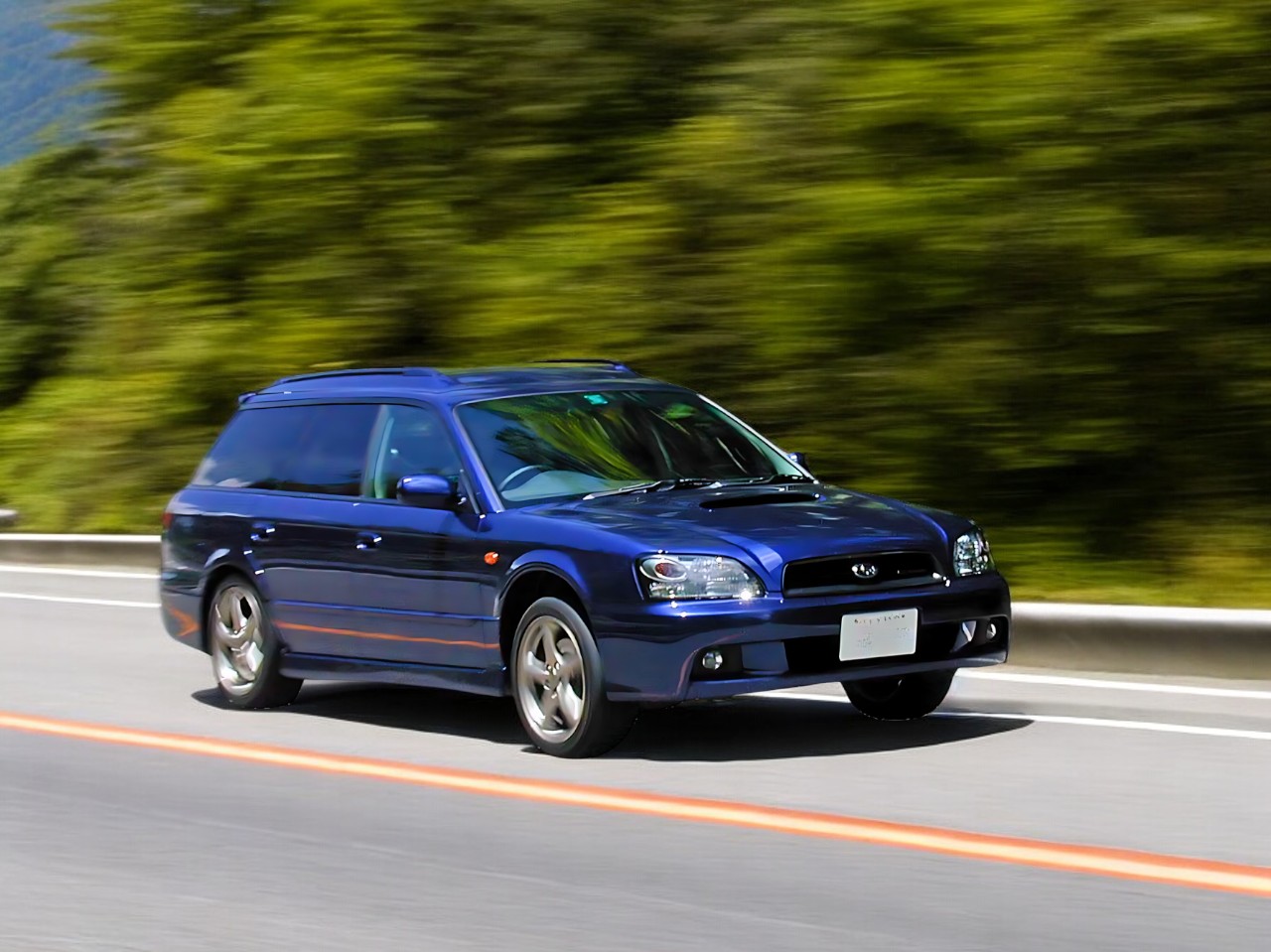
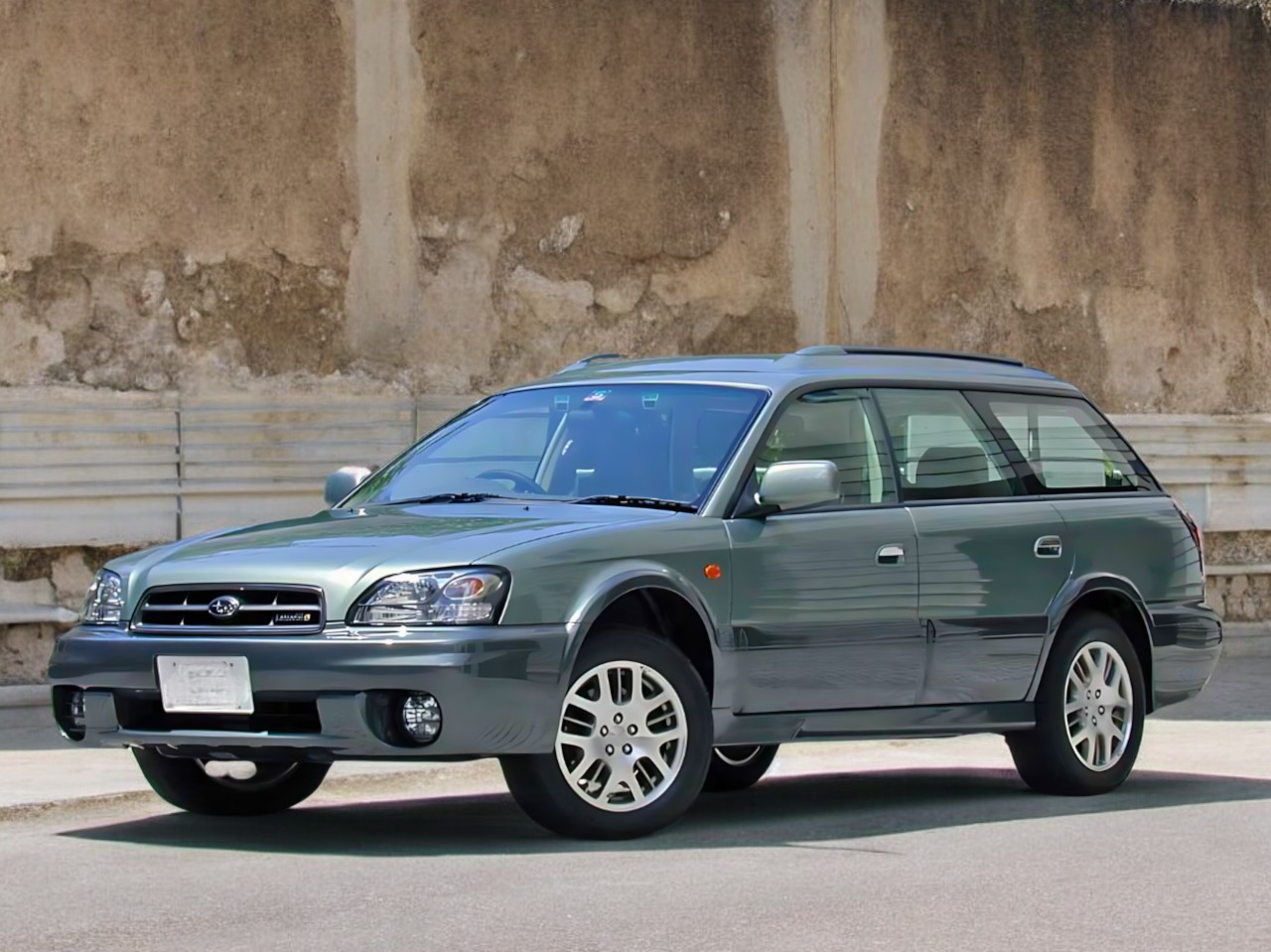
Interior
Comfort and Convenience
The interior of the second and third-generation Subaru Legacy and Legacy Outback models is designed with both driver and passenger comfort in mind. These models feature a spacious cabin with high-quality materials and thoughtful design elements. The seats are ergonomically designed to provide support during long drives, making these vehicles ideal for various driving conditions.
In the second-generation Legacy (1993-1998), the interior saw significant improvements over the first generation. The dashboard layout was more driver-focused, with controls that were easy to reach and operate. Upholstery options included durable fabric and higher-end trims with leather, catering to different preferences and budgets.
The third-generation Legacy (1998-2003) further enhanced interior comfort and convenience. This generation introduced a more modern dashboard design with improved materials and build quality. The Legacy Outback version featured additional rugged elements, such as water-resistant seat fabric and all-weather floor mats, catering to those who might encounter more challenging driving conditions
Cargo Space
Cargo space is a critical aspect of the Subaru Legacy and Legacy Outback, especially for your work as a rural letter carrier. In the second-generation models, the Legacy sedan offered a spacious trunk, while the wagon variants provided even more cargo room with the rear seats folded down. The Legacy Outback, with its raised roofline, offered additional vertical space, making it suitable for transporting bulkier items.
The third-generation models continued to prioritize cargo space. The Legacy sedan featured a large trunk, while the wagon and Outback models provided significant cargo capacity, enhanced by split-folding rear seats that allowed for flexible storage configurations. The Legacy Outback’s higher roof and increased rear cargo area made it particularly suitable for carrying larger loads.
Second-Generation Subaru Legacy (1993-1998)
Subaru Legacy Sedan: The cargo space for the second-generation sedan models is approximately 17.2 cubic feet. This provides ample room for daily use and is suitable for moderate cargo needs.
Subaru Legacy Wagon: The station wagon versions offer a bit more space, with around 69 cubic feet of cargo space when the rear seats are folded down.
Third-Generation Subaru Legacy (1998-2003)
Subaru Legacy Sedan: The third-generation sedan models have a cargo space of about 18.6 cubic feet.
Subaru Legacy Wagon: The station wagon versions in this generation offer approximately 73 cubic feet of cargo space with the seats down, giving a slight bump in useable space over the previous generation.
Subaru Legacy Outback: The Outback models, which are built on the same platform as the Legacy wagons, provide similar cargo capacities. The raised roofline and additional height offer more vertical space, giving a very slight boost in usable space.
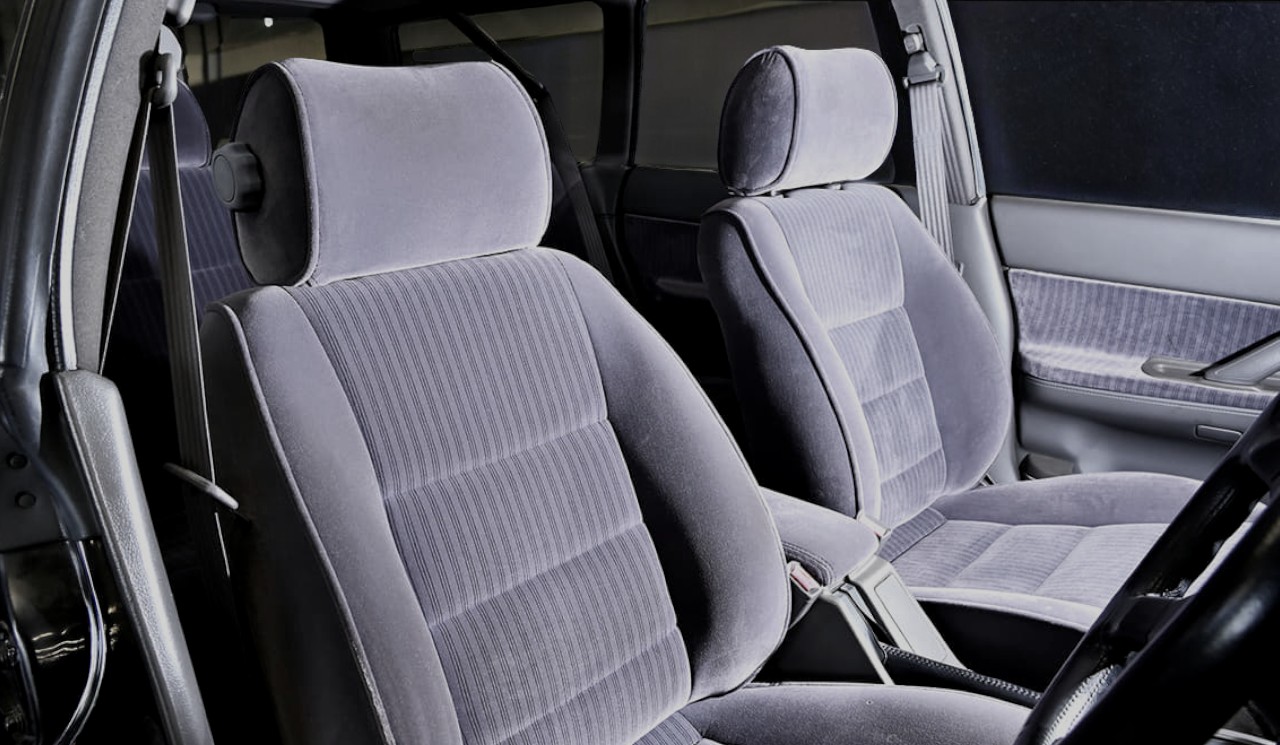
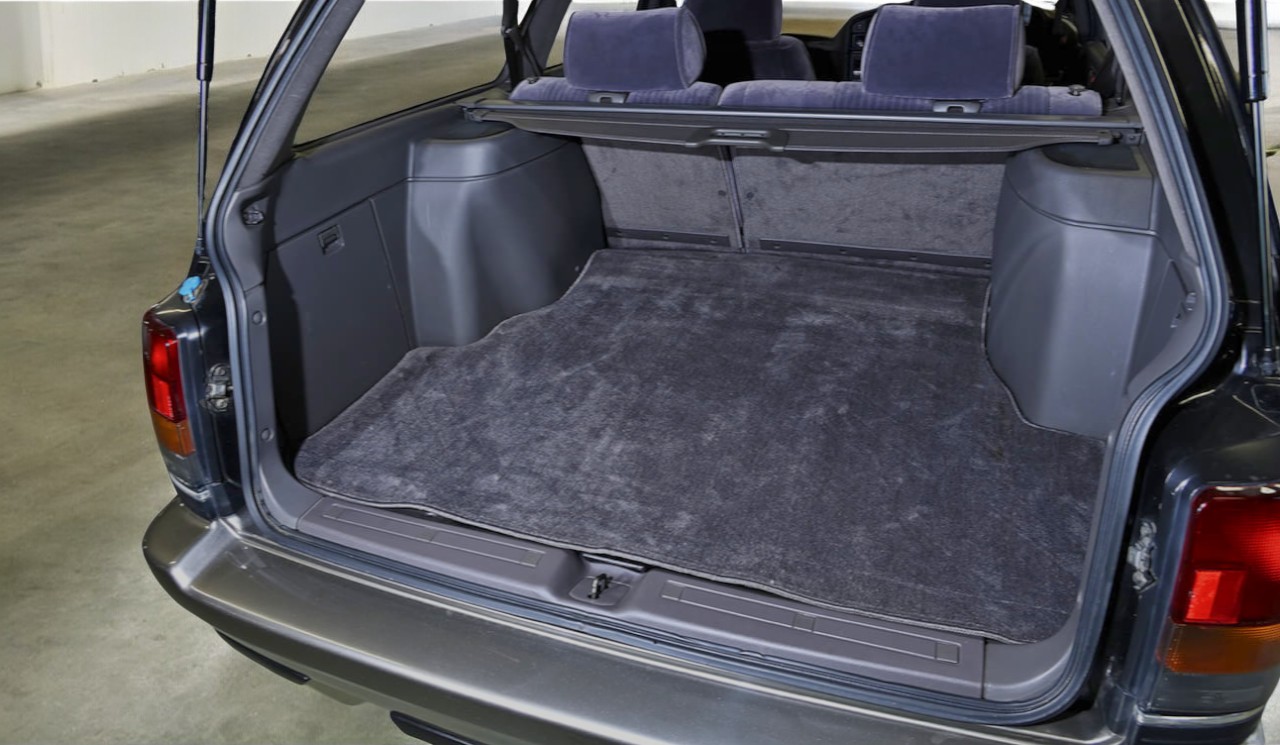
Performance and Handling
Engine Specifications
The second-generation Subaru Legacy (1993-1998) introduced several engine options tailored to different market needs. The primary engine was the EJ20, a 2.0-liter flat-four engine. This engine came in naturally aspirated and turbocharged variants, with the turbocharged version, known as the EJ20G, delivering up to 250 horsepower. Another popular engine was the EJ22, a 2.2-liter naturally aspirated flat-four engine, which provided a balanced mix of power and fuel efficiency.
The third-generation Subaru Legacy (1998-2003) continued to offer a range of engine options. Notably, the EJ25, a 2.5-liter naturally aspirated flat-four engine became standard in many models. This engine produced around 165 horsepower and was known for its reliability and smooth performance. For those seeking more power there was a turbocharged EJ208 engine that offered improved performance with its twin-turbo setup and was capable of producing up to 280 horsepower. A bit more than is really necessary for your typical postal delivery route … but it could make delivering the mail pretty fun!
Transmission Options
Both generations of the Subaru Legacy and Legacy Outback were available with multiple transmission options. The second-generation models featured a 5-speed manual transmission or a 4-speed automatic transmission.
For the third generation, Subaru introduced an improved 4-speed automatic transmission alongside the 5-speed manual option. These transmissions were designed to complement the engine’s performance, providing smooth and responsive gear changes. The inclusion of Subaru’s Symmetrical All-Wheel Drive (AWD) system across most models also helped ensure excellent traction and stability.
Fuel Efficiency
Fuel efficiency has always been a key consideration for Subaru. The second-generation Legacy models achieved respectable fuel economy figures, with the 2.2-liter engine offering around 22 mpg in the city and 29 mpg on the highway. The turbocharged variants, while more powerful, had slightly lower fuel efficiency due to their performance-oriented nature.
The third-generation Legacy models continued this trend, with the 2.5-liter engine providing similar fuel efficiency figures despite the larger engine capacity. In fact, the improved engine design and transmission options contributed to better overall fuel economy whether city stop-start driving, or highway cruising.
Handling
Both second and third generations featured a low center of gravity, thanks to the flat-four engine configuration, and this contributed to superior handling and stability. The suspension was tuned to provide a comfortable ride while maintaining responsive and agile handling characteristics.
Second-generation models were equipped with a MacPherson strut front suspension and a multi-link rear suspension (a setup more like you would expect on a much more expensive high-powered BMW sedan) providing a balanced and controlled ride. The third-generation models saw further refinements, with improvements in suspension geometry and chassis rigidity, enhancing both ride comfort and handling precision.
Subaru’s Symmetrical AWD system played a significant role in the handling capabilities of these vehicles. By distributing power evenly to all four wheels, the AWD system ensured excellent traction and stability. This made the Legacy and Legacy Outback popular choices for drivers seeking reliable performance in all weather conditions.

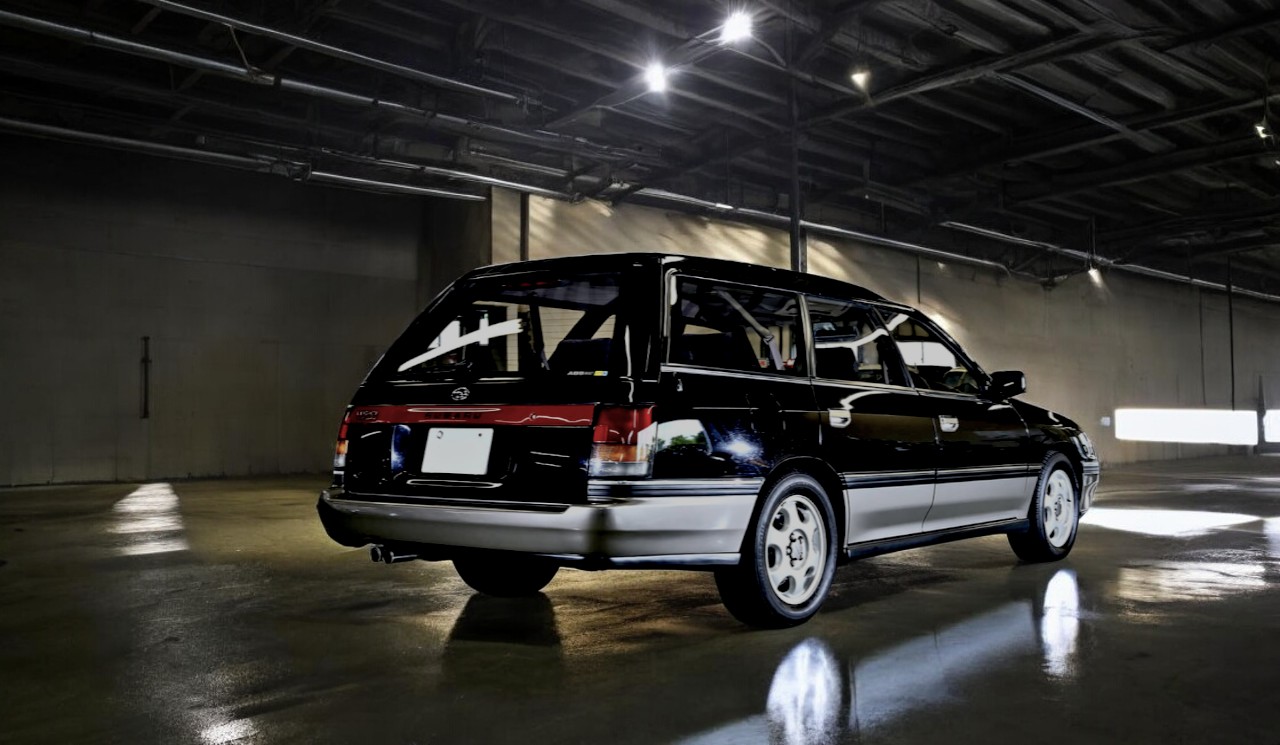
Safety Features
Standard Safety Features
Second Generation (1993-1998):
- Anti-lock Braking System (ABS): ABS was introduced to help maintain steering control during hard braking.
- Driver and Passenger Airbags: These were available in later models, providing essential protection in the event of a collision.
- Side-impact Door Beams: Reinforced doors to protect occupants in the event of a side impact.
- Collapsible Steering Column: Designed to reduce injury risk during a frontal collision.
Third Generation (1998-2003):
- Enhanced ABS: Improved ABS technology for better braking control.
- Dual Front Airbags: Standard in most models to provide better protection for front-seat occupants.
- Side Airbags: Introduced in later models for additional side-impact protection.
- Improved Crumple Zones: Engineered to absorb and dissipate energy during a crash, protecting the passenger cabin.
- Daytime Running Lights (DRL): Standard in some markets to improve vehicle visibility.
Advanced Safety Technologies
Second Generation (1993-1998):
- All-Wheel Drive (AWD): Provided superior traction and stability, especially in adverse weather conditions.
- Electronic Brake-force Distribution (EBD): Helped distribute braking force optimally between front and rear wheels.
Third Generation (1998-2003):
- Symmetrical AWD: Continued to be a key safety feature, offering balanced handling and better control.
- Vehicle Dynamics Control (VDC): An electronic stability control system introduced in some models to help maintain vehicle stability during cornering and evasive maneuvers.
These may not be quite the cutting edge technologies they were at the time, but they can still make your daily postal delivery ‘office’ a safer place to be.
Reliability and Maintenance
Maintenance Schedule
Just as for any vehicle, regular maintenance is essential to keep the Subaru Legacy and Legacy Outback running smoothly. Here are some key maintenance points for these models:
Oil Changes: Recommended every 3,000 to 5,000 miles to ensure optimal engine performance and longevity.
Timing Belt: Should be replaced every 60,000 to 100,000 miles to prevent engine damage. The EJ20 and EJ25 engines are interference engines which are more sensitive to following the correct schedule.
Brake Pads and Rotors: Inspect every 15,000 miles and replace them when required.
Fluid Levels: Regularly check and top off all fluids, including coolant, brake fluid, transmission fluid, and power steering fluid. Again, this can be done as required, rather than on a particular schedule.
Spark Plugs and Wires: Replace spark plugs every 30,000 miles and inspect wires for wear and tear.
Tire Rotation and Alignment: Rotate tires every 6,000 to 8,000 miles and check alignment to ensure even tire wear and extend tire life.
Air Filters: Replace engine air filter every 15,000 to 30,000 miles to maintain fuel efficiency and performance. Cabin air filters should be checked and replaced regularly for optimal HVAC performance.
Common Issues and Resolutions
Head Gasket Failure: This is more common in the EJ25 engines. Symptoms include overheating and coolant leaks. Regular coolant changes and using high-quality coolant can help prevent this issue. If failure occurs then this will result in head gasket replacement being required, so you clearly want to avoid this if at all possible.
Oil Leaks: This kind of issue often occurs around the valve cover gaskets. Regular inspection and timely gasket replacement is important to prevent this occurring.
Wheel Bearings: These are known to wear out over years of use, and lead to noise and potential handling issues. Again, regular inspection and replacement as needed can ensure safe operation.
Timing Belt Tensioner: If this fails, it will cause the timing belt to slip, leading to engine damage, so regular replacement of the timing belt and tensioner together as a set is recommended.
Suspension Wear: Bushings, struts, and control arms can wear out over time, so regular inspection and replacement are needed to help maintain ride quality and handling.
However, by following a consistent maintenance schedule and addressing common issues promptly, the Subaru Legacy and Legacy Outback will remain your loyal partners on your postal delivery route for many years.
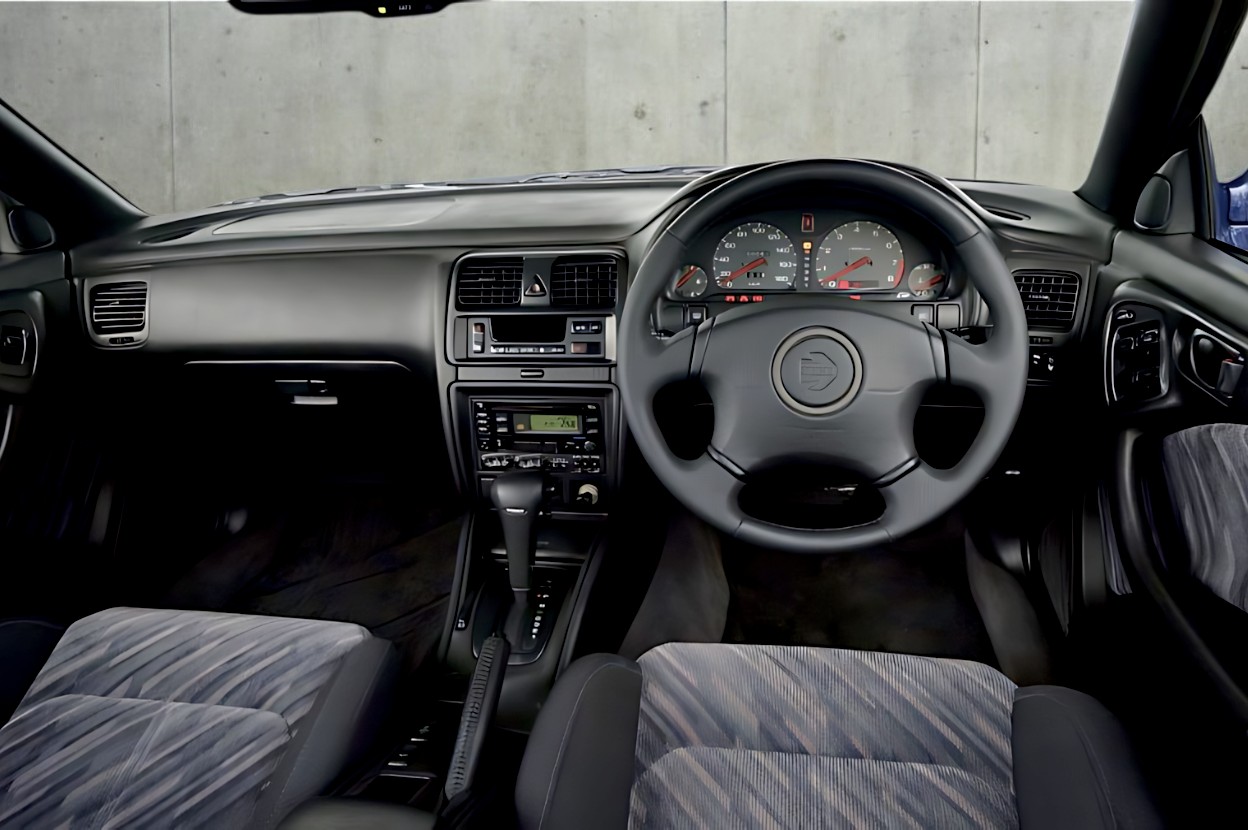
Subaru Legacy vs. Subaru Legacy Outback
Key Differences
These car manufacturers don’t make it easy, do they? Differences in models which may seem obvious to their marketing departments aren’t always that clear to the consumer. The Subaru Legacy and Legacy Outback are a great example of this. While they share the same platform and many components, each catered to slightly different market segments and driving needs. So let’s take a closer look so you can get a better idea about which would work best for your postal route.
Design and Appearance
- Subaru Legacy: Designed primarily as a family sedan or wagon, the Legacy features a sleek, aerodynamic design with a focus on on-road performance and comfort. The second-generation Legacy introduced in 1993 and the third-generation in 1998 both maintained a lower ground clearance, emphasizing a more car-like handling and appearance.
- Subaru Legacy Outback: The Outback, introduced in 1994 as the Legacy Grand Wagon and later renamed Legacy Lancaster in Japan, features a rugged design with increased ground clearance and protective body cladding. This design is aimed at providing better off-road capability and a more adventurous look
Performance
- Subaru Legacy: Offers a balanced driving experience with its lower center of gravity, making it ideal for highway and city driving.
- Subaru Legacy Outback: While sharing similar engine options, the Outback’s higher ground clearance and reinforced suspension make it better suited for off-road and all-weather conditions. It’s a more versatile choice for those who might encounter unpaved roads or snowy conditions.
Interior and Cargo Space
- Subaru Legacy: The Legacy sedan and wagon provide ample interior space with a focus on passenger comfort. The cargo space in the wagon variant is generous, making it practical for families and long trips.
- Subaru Legacy Outback: The Outback offers similar interior space but with additional practicality. The raised roofline and increased cargo area height allow for more versatile storage options. This is particularly useful for carrying larger items or outdoor gear.
Special Features
- Subaru Legacy: Therse models typically include comfort and tech features – things like premium audio systems and advanced driver-assistance systems in higher trims.
- Subaru Legacy Outback: Along with comfort features, the Outback includes rugged enhancements such as water-resistant seat fabric, all-weather floor mats, and roof rails for extra cargo capacity.
Summary By Model
Legacy Outback
- Ground Clearance: The Outback’s increased ground clearance of just under 8 inches provides better off-road capability.
- Reinforced Suspension: Enhanced suspension for improved performance on rough terrain.
Legacy
- Sportier Handling: The Legacy’s lower stance and refined suspension provide a sportier driving experience, making it more agile on paved roads.
- Luxury Options: Higher trims often include more luxury-oriented features such as leather seats and premium audio systems, catering to those seeking a more upscale experience.
Check out these differences to help you choose the model that is going to work best for your delivery route, whether it’s the rugged versatility of the Legacy Outback or the sleeker comfort of the Legacy.
Why Choose A Subaru Legacy / Legacy Outback?
Factory Right-Hand Drive (RHD)
Of course, both models are available in factory right-hand drive configurations, with all the benefits of easily accessing mailboxes from the driver’s seat without having to stretch across the vehicle to drive from the passenger’s side – with all the pain and damage to your body that this entails.
All-Wheel Drive (AWD)
Subaru’s renowned Symmetrical All-Wheel Drive (AWD) system provides superior traction and stability, especially in challenging weather conditions. If your delivery route involves snow in the winter, then this kind of powertrain is a must.
Durability and Reliability
The Subaru Legacy and Legacy Outback are known for their durability and reliability. These vehicles are built to withstand the demands of daily driving in rural areas – just what you need when you’re a rural letter carrier who needs a vehicle you can count on day in and day out.
Cargo Space
Both the Legacy station wagon models and the Legacy Outback variants have ample cargo space, making it easy to carry large volumes of mail and packages. The versatility of the cargo area, the split rear seats in later models, and especially the extra interior height in the Outback, can work well for hauling packages.
Fuel Efficiency
Despite their good performance, both models also offer competitive fuel efficiency, helping to keep your running costs low so you can make the most of your EMA.
Specifications Overview
Engines: Second Generation (1993-1998)
- EJ20: 2.0-liter flat-four, available in naturally aspirated and turbocharged versions. Turbocharged variant offers up to 250 horsepower.
- EJ22: 2.2-liter naturally aspirated flat-four, providing a balance of power and efficiency.
Engines: Third Generation (1998-2003)
- EJ25: 2.5-liter naturally aspirated flat-four, producing around 165 horsepower.
- EJ208: 2.0-liter twin-turbo flat-four capable of up to 280 horsepower.
Transmissions
- 5-Speed Manual: Available in both second and third generations.
- 4-Speed Automatic: Available in both second and third generations.
Drive Configurations
- Symmetrical All-Wheel Drive (AWD): Standard across most models, providing excellent traction and stability.
Dimensions: Second Generation (1993-1998)
- Length: Approximately 181.1 inches
- Width: Approximately 66.7 inches
- Height: Approximately 55.5 inches
- Wheelbase: Approximately 103.5 inches
Dimensions: Third Generation (1998-2003)
- Length: Approximately 182.1 inches
- Width: Approximately 66.9 inches
- Height: Approximately 55.9 inches
- Wheelbase: Approximately 103.7 inches
Cargo Space
- Second Generation Sedan: 17.2 cubic feet
- Second Generation Wagon: 69 cubic feet when rear seats are folded
- Third Generation Sedan: 18.6 cubic feet
- Third Generation Wagon: 73 cubic feet when rear seats are folded
Fuel Efficiency
- Second Generation: Around 22 mpg city and 29 mpg highway for the 2.2-liter engine.
- Third Generation: Similar fuel efficiency figures, but with some improvements due to slight engine and transmission efficiency gains.

